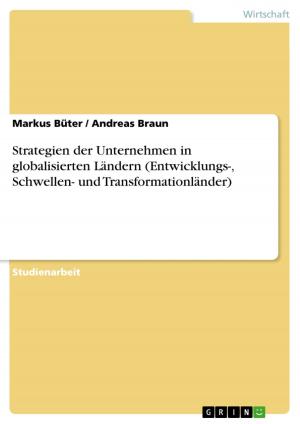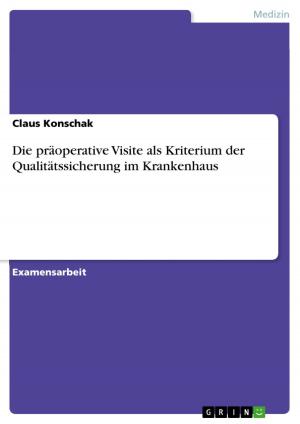Emotional influences on personality assessment
How anxiety related stimuli might affect the self-reported Big
Nonfiction, Health & Well Being, Psychology, Applied Psychology| Author: | Christoph Mât | ISBN: | 9783656009412 |
| Publisher: | GRIN Verlag | Publication: | September 19, 2011 |
| Imprint: | GRIN Verlag | Language: | English |
| Author: | Christoph Mât |
| ISBN: | 9783656009412 |
| Publisher: | GRIN Verlag |
| Publication: | September 19, 2011 |
| Imprint: | GRIN Verlag |
| Language: | English |
Diploma Thesis from the year 2009 in the subject Psychology - Diagnostics, Humboldt-University of Berlin (Institut für Psychologie - Mathematisch-Naturwissenschaftliche Fakultät II), language: English, abstract: To examine state influences on personality assessments 112 female subjects received anxiety priming in a pre-post-design under lab conditions. The Big Five were assessed with the NEO FFI. The treatment had a uniform effect on four of the Big Five scales. Neuroticism scores increased due to the treatment, which was hypothesized. Extraversion, agreeableness and conscientiousness mean scores decreased significantly in the post-measurement. Furthermore an augmentation in reliability in the post measurement of the Big Five scales was expected and observed but only found to be significant for the conscientiousness scale. Underlying processes leading to the uniform shift in mean scores as well as implications for diagnostic practice and future research are discussed.
Diploma Thesis from the year 2009 in the subject Psychology - Diagnostics, Humboldt-University of Berlin (Institut für Psychologie - Mathematisch-Naturwissenschaftliche Fakultät II), language: English, abstract: To examine state influences on personality assessments 112 female subjects received anxiety priming in a pre-post-design under lab conditions. The Big Five were assessed with the NEO FFI. The treatment had a uniform effect on four of the Big Five scales. Neuroticism scores increased due to the treatment, which was hypothesized. Extraversion, agreeableness and conscientiousness mean scores decreased significantly in the post-measurement. Furthermore an augmentation in reliability in the post measurement of the Big Five scales was expected and observed but only found to be significant for the conscientiousness scale. Underlying processes leading to the uniform shift in mean scores as well as implications for diagnostic practice and future research are discussed.















